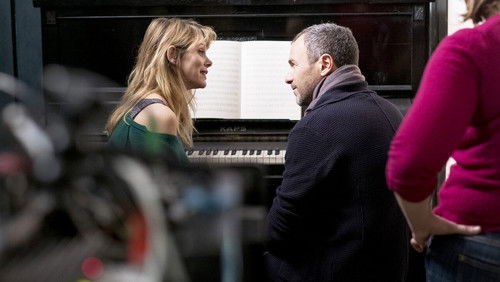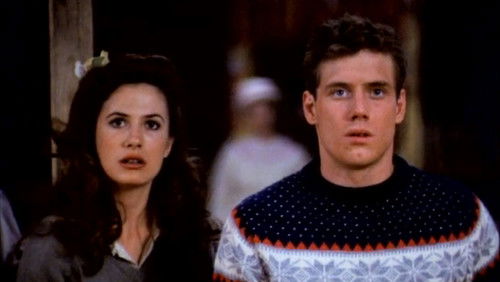The Village – Das Dorf (2004)
13KThe Village – Das Dorf: Directed by M. Night Shyamalan. With Bryce Dallas Howard, Joaquin Phoenix, Adrien Brody, William Hurt. A series of events tests the beliefs of a small isolated countryside village.
“I donu0026#39;t think Iu0026#39;ve ever been more shocked by how much I liked a film. I had very low expectations when I decided to watch u0026quot;The Village,u0026quot; because I knew how much critics had panned it. Iu0026#39;m not saying that I regard the consensus of the critics as sacrosanct. But the movies I love are rarely ones that have earned critical scorn, so by the law of probability I doubted that this one would be any good. Besides, I had noticed a steadily downward slope in the quality of M. Night Shyamalanu0026#39;s films since u0026quot;The Sixth Sense.u0026quot; When u0026quot;The Villageu0026quot; was released and subsequently panned, it seemed to fit the pattern that I myself had noticed. So I didnu0026#39;t go and see the film. Only recently did I take a look at it on cable, more out of curiosity than anything else.u003cbr/u003eu003cbr/u003eAnd alas, I found the first fifteen minutes rather slow. The movie has a lot of characters, and it doesnu0026#39;t quickly establish which ones are the most important. All we see is this primitive nineteenth-century village in the midst of woods that the villagers believe to be haunted by ominous, sentient creatures who will not harm the people as long as they donu0026#39;t set foot in the woods. The villagers have all sorts of rituals to protect themselves from attack, such as avoiding the color red (what is it with Shyamalan and red?) and wearing yellow hoods. But rules are meant to be broken, and a quiet, mysterious young man played by Joaquin Phoenix wants to journey into the woods so that he can visit u0026quot;the townsu0026quot; on the other side, which boast superior medicine. Among other things, he wonders if heu0026#39;ll find a cure for his mentally handicapped friend (Adrien Brody). In the meantime, heu0026#39;s falling in love with the blind girl (Bryce Dallas Howard) whose role in the plot will expand as the movie progresses.u003cbr/u003eu003cbr/u003eThe love story between Phoenix and Howard is well-handled and believable, transcending the romantic clichés. The two characters seem to possess a common understanding and donu0026#39;t have to talk much in order for us to feel the developing bond between them. But what they do say to each other is intriguing. My favorite line is u0026quot;Sometimes we donu0026#39;t do things we want to do so that others wonu0026#39;t know we want to do them.u0026quot; Their personalities also transcend stereotype, particularly with Phoenix: while stoic and courageous, heu0026#39;s also shy and withdrawn, as revealed in scenes where he passes letters to the public council instead of speaking in front of them. His ultimate significance to the story turns the heroic convention on its head.u003cbr/u003eu003cbr/u003eEveryone in the village speaks in an oddly formal manner, using big words and avoiding contractions. The accents are American, but the diction is like that of a nineteenth-century English novel. Amazingly, the actors make this language sound natural as it rolls off their tongues. The cast includes several familiar faces: William Hurt, Sigourney Weaver, Brendan Gleeson, and the aforementioned Phoenix and Brody. But the star of the film is the as-yet unknown Howard, who delivers a performance so compelling that itu0026#39;s a shame the film was trashed by critics.u003cbr/u003eu003cbr/u003eMuch of the film concerns the relationships of the characters in the village, but the mystery of the creatures also dominates the plot. This is more of a quietly creepy u0026quot;Twilight Zoneu0026quot;-style tale than outright horror. Like Shyamalanu0026#39;s other films, it ultimately carries a message of hope and optimism. But Shyamalan does not forget his horror roots. No other Hollywood filmmaker today is better at crafting scenes where a character is being haunted by an evil presence. These scenes work because of Shyamalanu0026#39;s acute sense of how nightmares feel. Like all skilled horror directors, he knows not to focus on the monster itself but on the panicked reaction of the character being stalked.u003cbr/u003eu003cbr/u003eWhile the use of a blind character is hardly a new device, Shyamalan handles the scenes with Howard in an interesting way. Instead of the usual approach of teasing the audience by showing exactly what the blind character doesnu0026#39;t see, he practically makes us blind along with her. He has the camera follow her as she walks, so that we donu0026#39;t see whatu0026#39;s in front of her. We soon realize that we are seeing little more than what she is able to discern about her surroundings. In crucial scenes, we are effectively almost as much in the dark as she is.u003cbr/u003eu003cbr/u003eI cannot say much more about the plot without ruining the movieu0026#39;s surprises, which are abundant. Critics dismissed u0026quot;The Villageu0026quot; as a crude exercise in plot manipulation. I couldnu0026#39;t disagree more. While Iu0026#39;m not certain that the logistics of the plot work in every detail, most of the criticisms I have heard reflect a superficial reading of the story.u003cbr/u003eu003cbr/u003eThe film has the same basic structure that Shyamalan always uses, where we are swept up in the events and only at the end do we find out what the movie was truly about. From there, we have to think backwards to understand the ultimate meaning of the story. I have seen the movie three times now, noticing new things each time. The social themes make me think that Shyamalan is familiar with Joseph Campbellu0026#39;s works on primitive societies and the origin of drama. The back story is very well thought out compared to that of the average thriller, and I feel some disappointment that more people arenu0026#39;t able to appreciate it. The beauty and genius of this film is a well-kept secret.”









